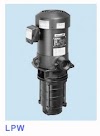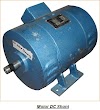Internal Combustion Engines Configuration
Internal combustion engines come in a variety of shapes and sizes. The piston-cylinder geometry, the inlet and exhaust valve geometry, the usage of super or turbochargers, the kind of fuel delivery system, and the type of cooling system are all characteristics of a given engine using a four- or two-stroke Otto or Diesel cycle.
The reciprocating piston-cylinder combination is still the most common internal combustion engine configuration. Many alternative piston-cylinder configurations have been devised since the advent of the internal combustion engine, as shown in Figure below. The selection of a particular layout is influenced by a variety of factors and limits, including engine balancing and available volume. Because it is the simplest to make and maintain, the in-line engine is the most common. Two in-line banks of cylinders are arranged at an angle to each other to form the letter V in the V engine. A V engine with 180 offset piston banks is known as a horizontally opposed or flat engine. Three in-line banks of cylinders are placed at an angle to each other to create the letter W in the W engine. All of the cylinders in a radial engine are in one plane, with equal spacing between the cylinder axes. Because each cylinder can be cooled equally, radial engines are employed in air-cooled aviation applications. Because the cylinders are in a plane, one cylinder has a master connecting rod to which articulated rods are linked. Alternatives to the reciprocating piston-cylinder arrangement have been devised, such as the rotary Wankel engine, which uses a triangularly shaped rotor that rotates eccentrically in a casing to achieve compression, ignition, and expansion of a fuel-air combination.
Intake and Exhaust Valve Arrangement
Gases are admitted and discharged from the cylinders by valves that open and close at the appropriate periods, or through ports exposed or covered by the piston. The kind and location of the intake and exhaust valves can be customized in numerous ways.
Poppet valves (seen above) are the most common type of valve used in internal combustion engines because of their outstanding sealing properties. Sleeve valves have also been utilized, however they do not provide the same level of sealing as poppet valves. Depending on manufacturing and cooling factors, the poppet valves might be found in the engine block or the cylinder head. The valves are positioned in the block of older autos and tiny four-stroke engines, a design known as underhead or L-head. Most engines today have valves positioned in the cylinder head, often known as an overhead or I-head layout, because this configuration provides excellent inlet and exhaust flow characteristics.
For four-stroke engines, the valve timing is controlled by a camshaft that rotates at half the engine speed. Figure below depicts a valve timing profile. The valve motion is controlled by lobes on the camshaft, as well as lifters, pushrods, and rocker arms. To avoid pushrods, some engines use an overhead camshaft. Using sophisticated camshafts with adjustable lobes or motorized valves, the valve timing can be adjusted to boost volumetric efficiency. The valve opening duration and timing can be modified as the load changes.
Superchargers and Turbochargers
All of the engines examined thus far are naturally aspirated, which means that the intake gas is brought in by the piston's downward motion. Supercharged and turbocharged engines are also available. Supercharging is the mechanical compression of incoming air to a pressure greater than ordinary atmosphere using a crankshaft-driven compressor. The compressor raises the density of the intake air, allowing more fuel and air to be fed to the cylinder, resulting in increased power. Figure below illustrates the notion of turbocharging. Exhaust gas from an engine is expanded further by a turbine, which drives a compressor. The advantages are twofold: (1) the engine is more efficient because energy that would otherwise be wasted is recovered from the exhaust gas; and (2) a smaller engine can be built to provide the same amount of power since it is more efficient and the density of the incoming charge is higher. When turbocharging, the power available to drive the compressor is a nonlinear function of engine speed, therefore there is minimal, if any, boost (density increase) at low speeds and maximum boost at high speeds. At part throttle, it's low, and at wide open throttle, it's high. These are beneficial properties for an automobile engine because they reduce throttling and pumping losses. To improve efficiency, most big and medium-sized diesel engines are turbocharged.
Fuel Injectors and Carburetors
Computerized engine controls and fuel distribution systems have seen revolutionary modifications in recent years, and development is still being made. In engines developed for automobile use, for example, the ignition and fuel injection are computer controlled. In the 1980s, traditional carburetors were replaced by throttle body fuel injectors, which were then replaced by port fuel injectors in the 1990s. Port fuel injectors are positioned in each cylinder's intake port, immediately upstream of the intake valve, thus each cylinder has its own injector. Because the time lag for fuel delivery is substantially shorter than that of a throttle body injector, the port injector does not need to maintain a constant fuel spray.
Many production engines have direct injection spark ignition engines. The fuel is injected directly into the cylinder during the late phases of the compression stroke with direct injection. Direct injection engines can operate at a higher compression ratio than port injection engines, and so have a better potential efficiency because they are not knock limited. They'll also be unthrottled, which means they'll be more efficient at part load in terms of volumetric efficiency. The charge cooling effect of the injected fuel evaporating in the combustion chamber will also boost its volumetric efficiency.
Cooling System
To eliminate the approximately 30% of the fuel energy rejected as waste heat, a cooling system is necessary. The two most common cooling technologies are liquid and air cooling. A single loop liquid cooling system (see Figure below) feeds coolant from a water pump to the engine block and then to the head. Warm coolant circulates through the intake manifold, warming it and assisting in the vaporization of the fuel.
The coolant will next go to a radiator or heat exchanger, where it will reject waste heat to the atmosphere before returning to the pump. A thermostat prevents coolant from returning to the radiator while the engine is cold, allowing the engine to warm up faster. Although liquid-cooled engines are quieter than air-cooled engines, they are more prone to leaking, boiling, and freezing. Air cooling is used mostly in engines with low power output (less than 20 kW). Fins are used in air cooling systems to reduce the temperature of the air side surface (see Figure below). Combining water and air cooling has been done in the past. The Mors, a car from the early 1920s, featured a finned air-cooled cylinder and water-cooled heads. Sumber http://keluargasepuh86.blogspot.com












